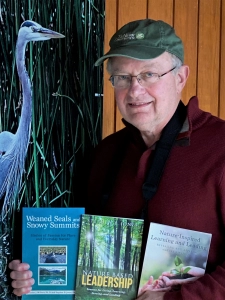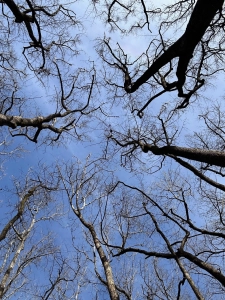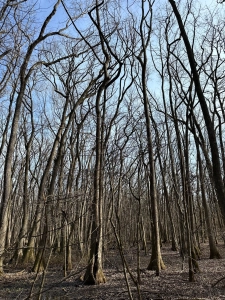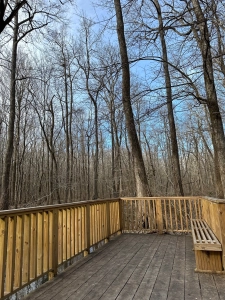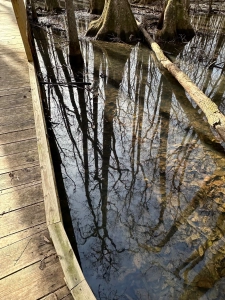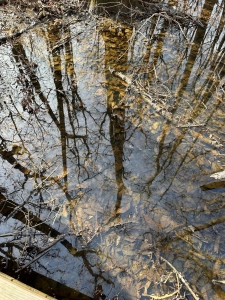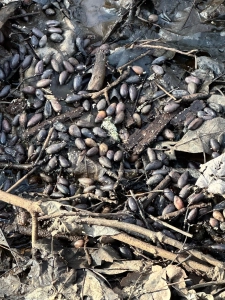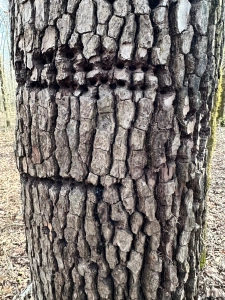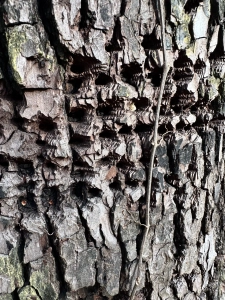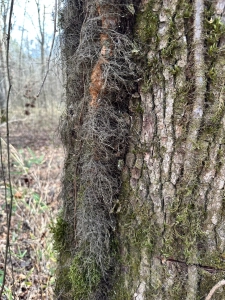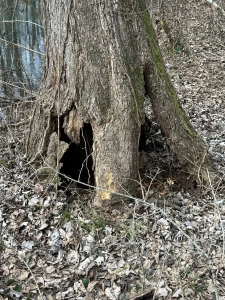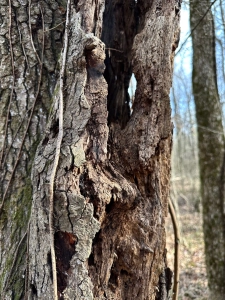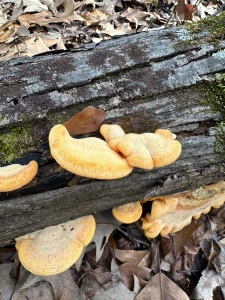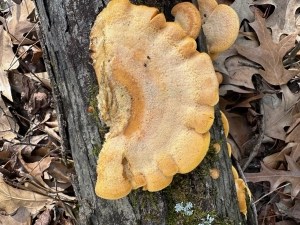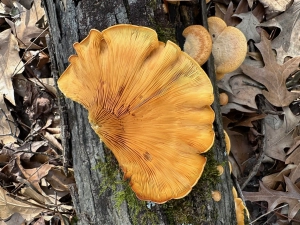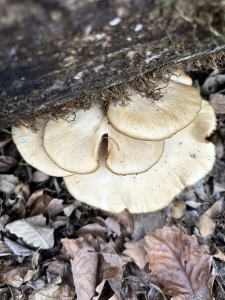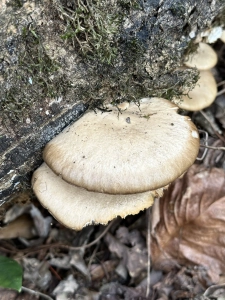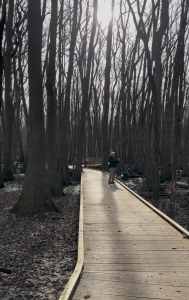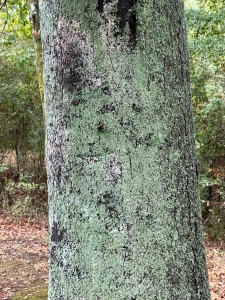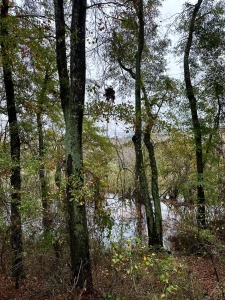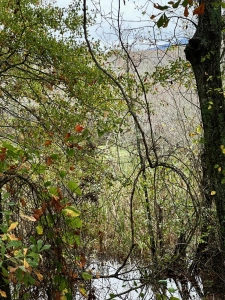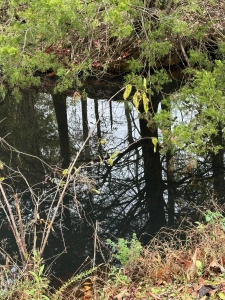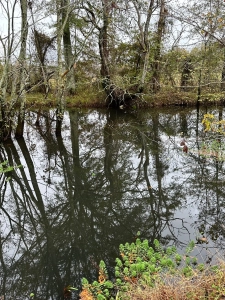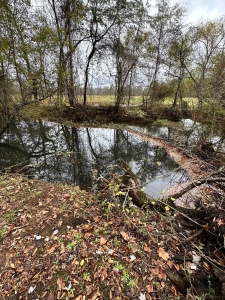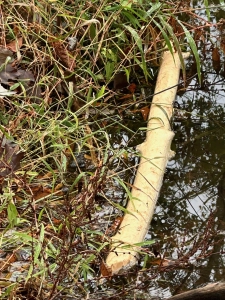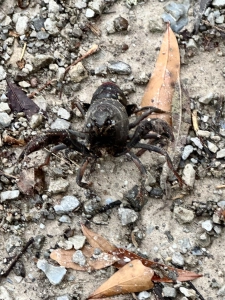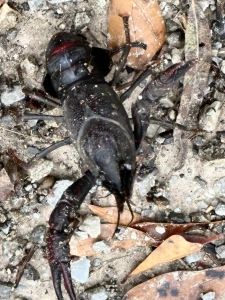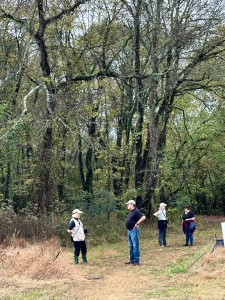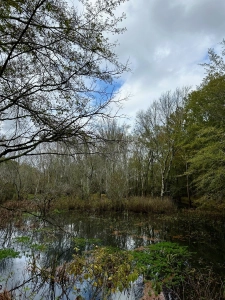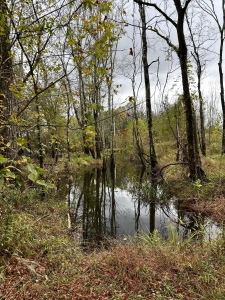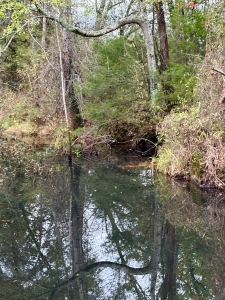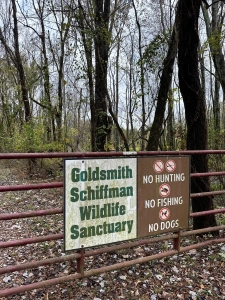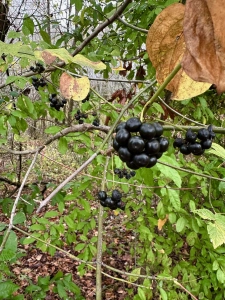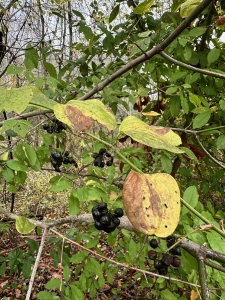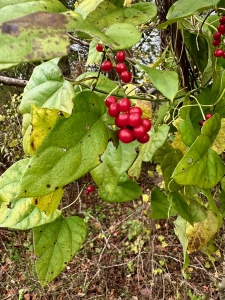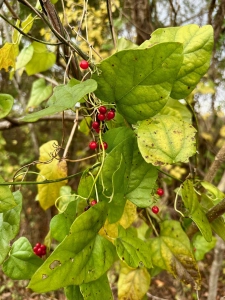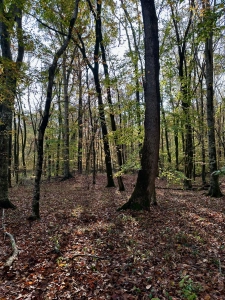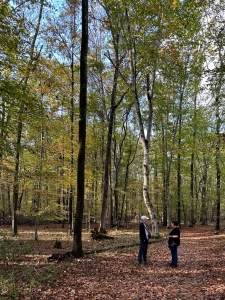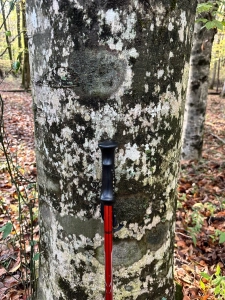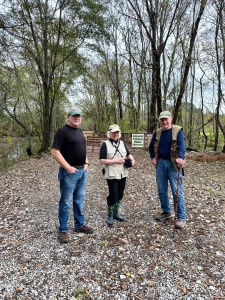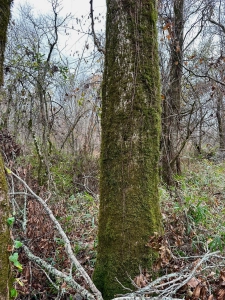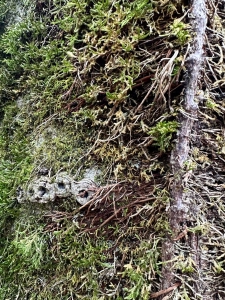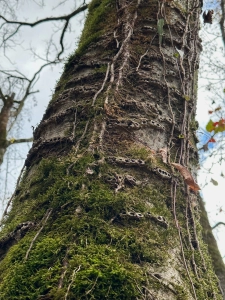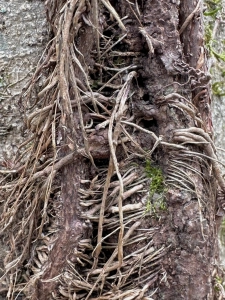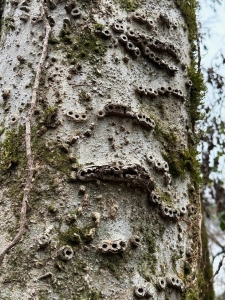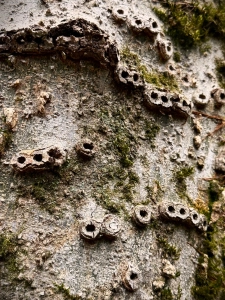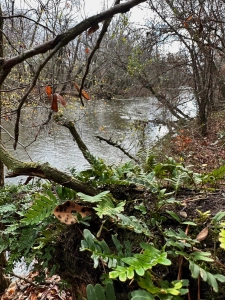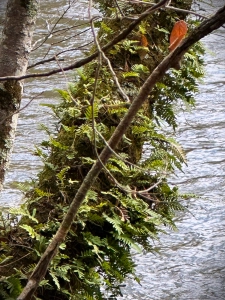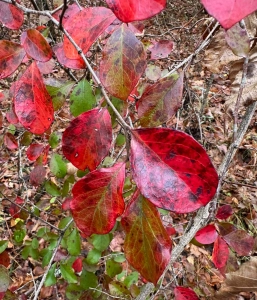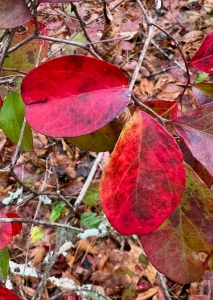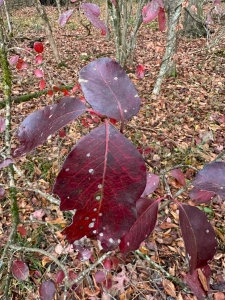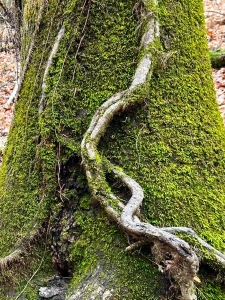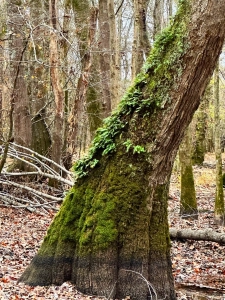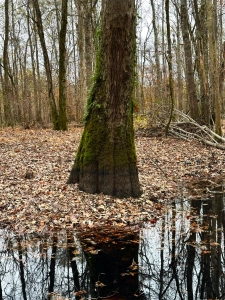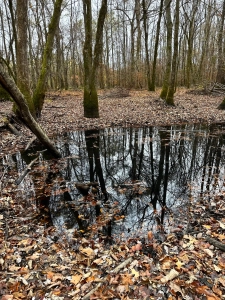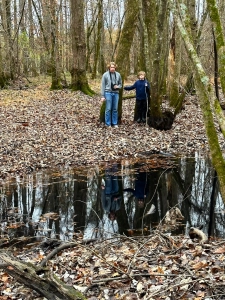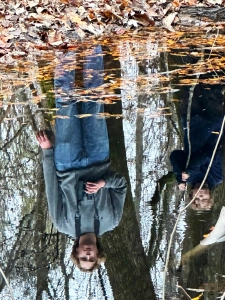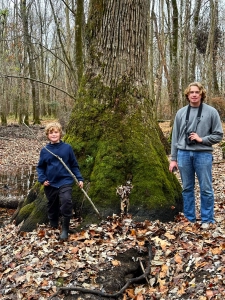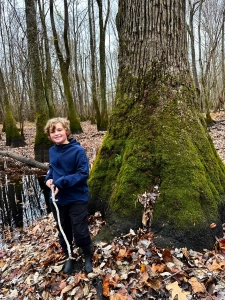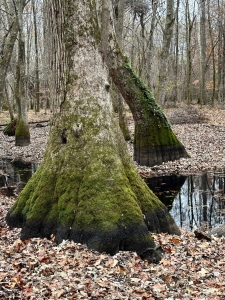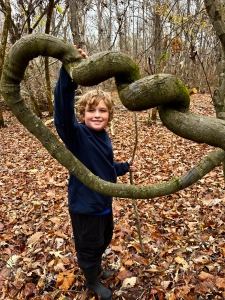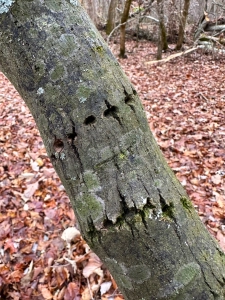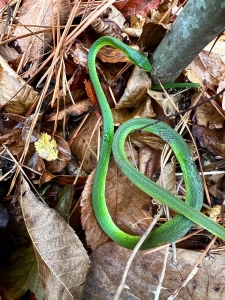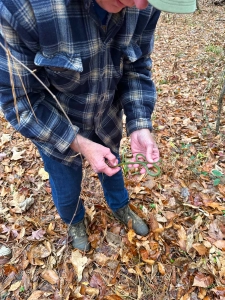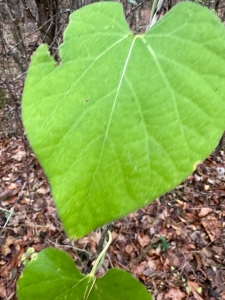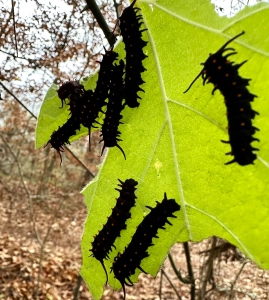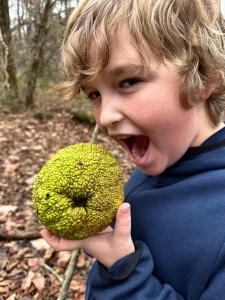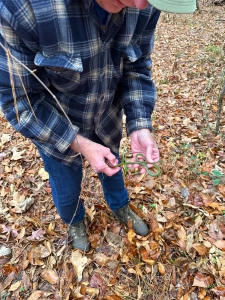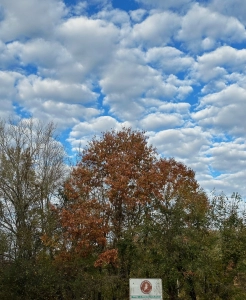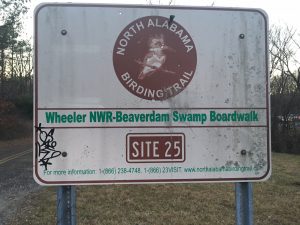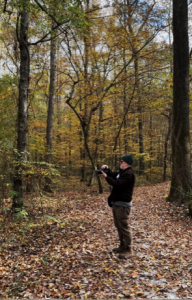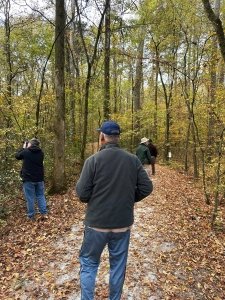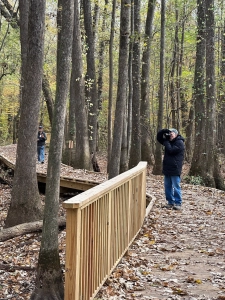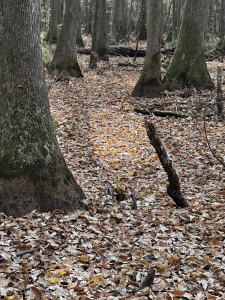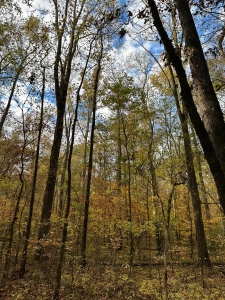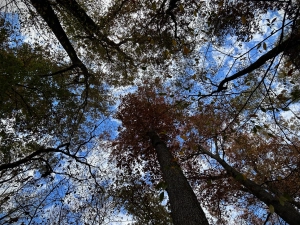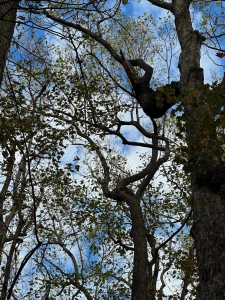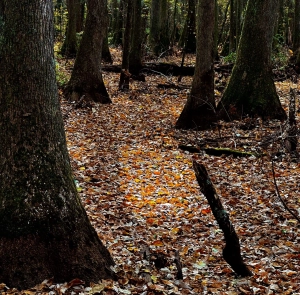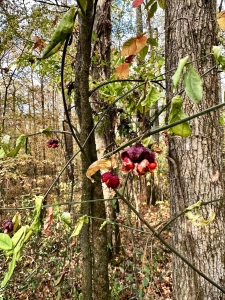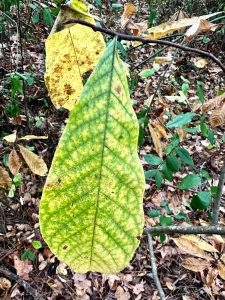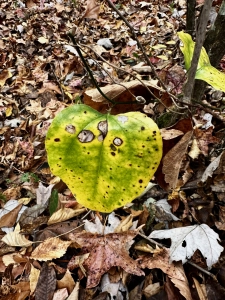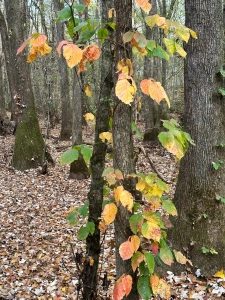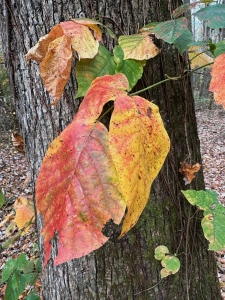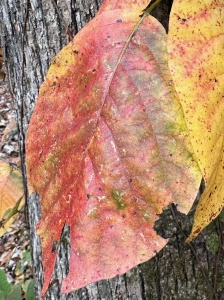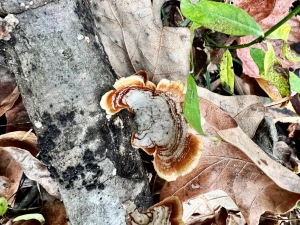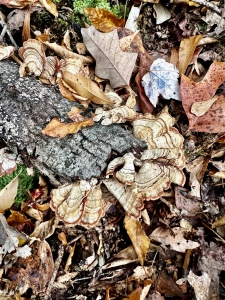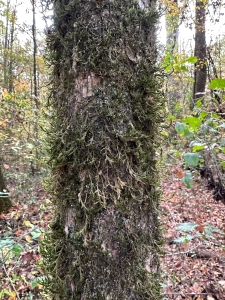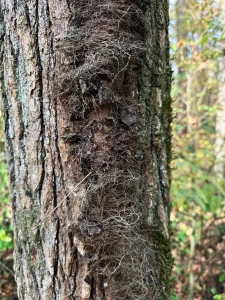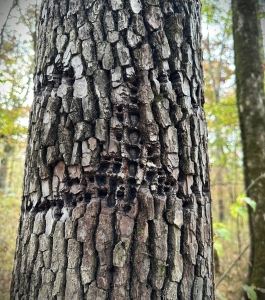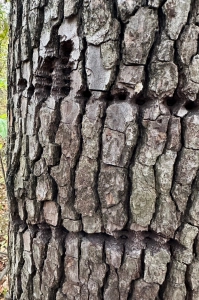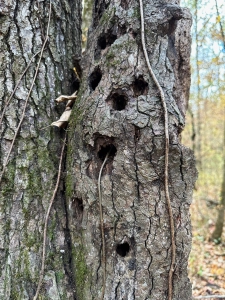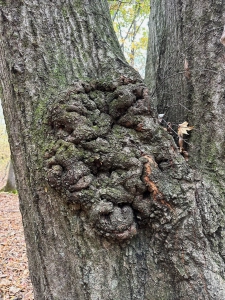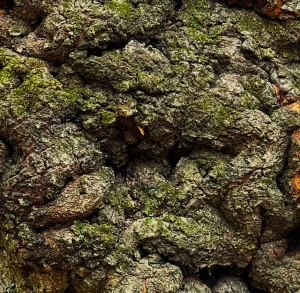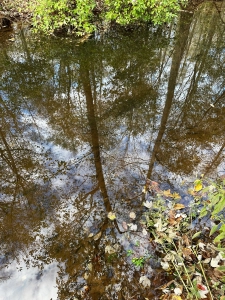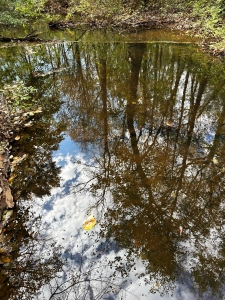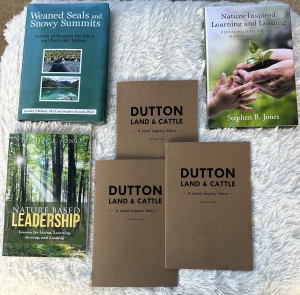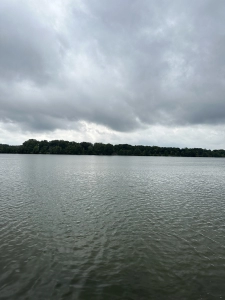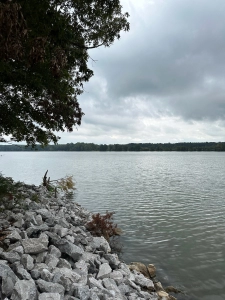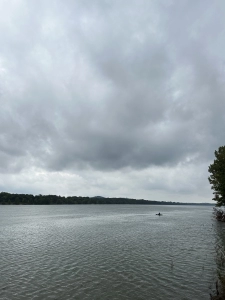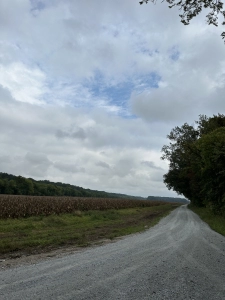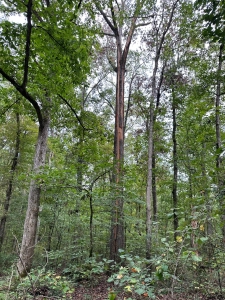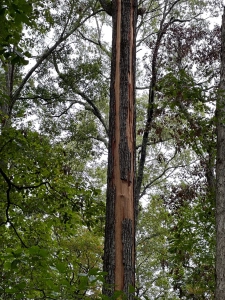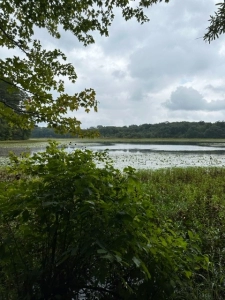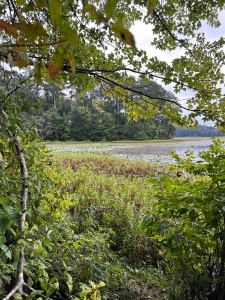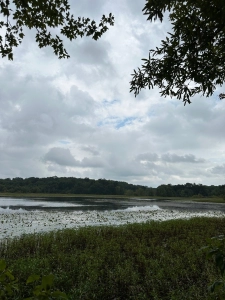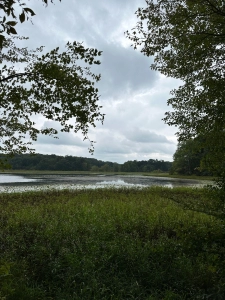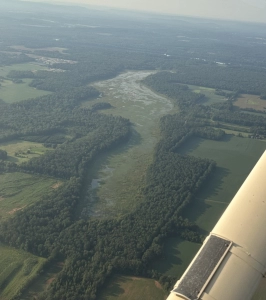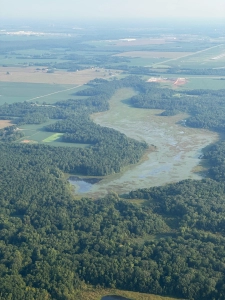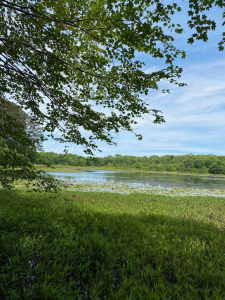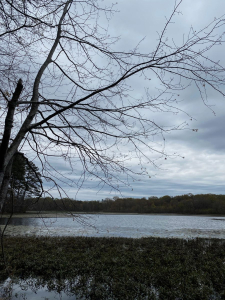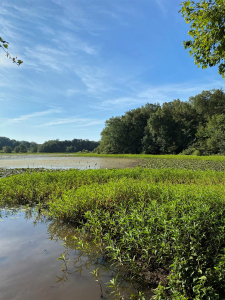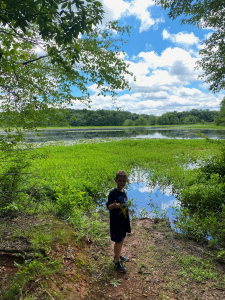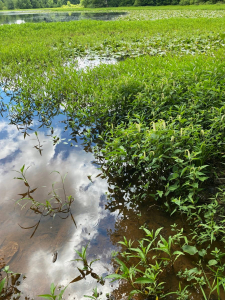Bottomland Tree Oddities on the Goldsmith-Schiffman Wildlife Sanctuary!
On February 15, 2024, fellow retired forester Chris Stuhlinger and I sauntered through the eastside bottomland hardwood forest at Huntsville, Alabama’s Goldsmith-Schiffman Wildlife Sanctuary. Heavy flooding two days earlier submerged the forest in overflow from the adjacent Flint River. We decided to see whether the river had fallen back within its banks…it had, yet it still flowed swiftly at bankful. Although the trails remained wet, we could transit the bottomland by avoiding still-inundated channels and depressions. As is often the case, my familiar woodlands present a new face…a special character…every time I venture to explore. The recent flooding produced a fresh countenance.
I focus this brief photo essay on the unusual tree forms we encountered. Water remained stranded across the forest where overflow found no immediate outlet. Each tree reflected where the water stood.
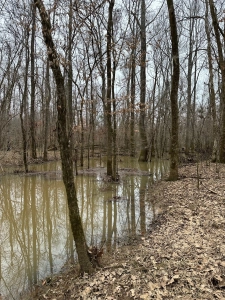
Gnarly burls blemished (or accented depending upon my perspective) this mockernut (or pignut?) hickory. My long ago commercial forestry mind would have seen these burls as commercial defects; today I view them as fairyland accents.
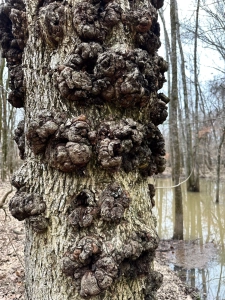
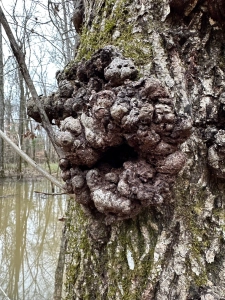
I recorded this 59-second video of the burled hickory:
A neighboring hickory sported a single large canker framed by a poison ivy vine. The vine and the tree reached into the upper canopy, nourished by the abundant sunshine powering summertime leaves 90-100 feet above the ground.
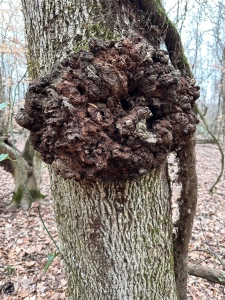
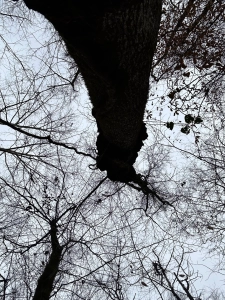
This nearby canker-free hickory’s bark is marred by only a few sapsucker drill holes.
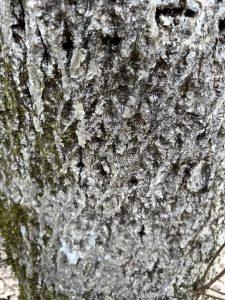
A mid-story hickory dares us to explain its tortured form. Leonardo da Vinci opined that all such natural phenomena result from cause:
There is no result in nature without a cause; understand the cause and you will have no need of the experiment.
I attribute its collapsed and contorted form to a fallen tree, top, or branch when the hickory stood proudly erect as a sapling. Every tree survives when able…and fights valiantly to reproduce. After all, isn’t that the ultimate objective of every living organism…to sustain its genetic line?!
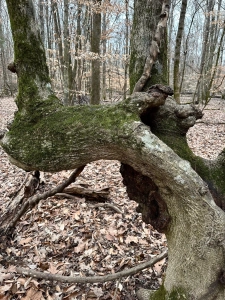
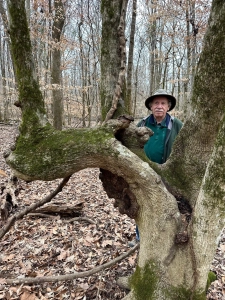
Its purpose does not include entertaining me and challenging my forest scientist’s curiosity and woodland sauntering contemplation, yet it accomplishes that unintentioned end!
Individual hickory specimens served us well, yet did not constitue the afternoon production’s full cast. Sugar maples reached out to us with full voice and rich attire, painted black with flourishing sooty mold feeding on some nature of seasonal exudate. Sooty mold is a fungus, distantly related to the edible wild mushrooms I cherish. All fungi are neither plants nor animals. They have occupied their own Kingdom since about the time I earned my BS in Forestry. When I studied tree diseases, the offending fungi were deemed plants. Very recent sapsucker drill holes, two of them obviously fresh, are clear of the mold.
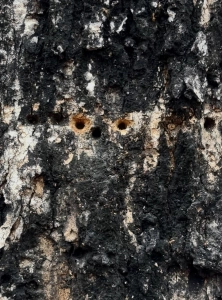
The darkened bark distinguished sugar maple from other species during this dark and damp winter afternoon.
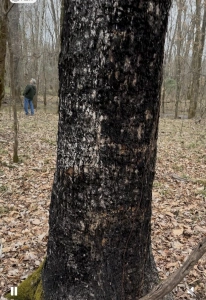
I recorded this 55-second video of our sooty friend:
Ironwood or eastern hop-hornbeam (Ostrya virginiana), a common under- and mid-story species ranging from here well into New England, bears distinctively smooth and finely shredded bark. As the common name implies, its wood is unusually hard. Common uses include: wagon axles, tool handles, levers, mallets, canes, woodenware, and novelty doodads. Most individual ironwood trees I encounter are slender. This one insisted upon being noticed for a bulkier body type (a variation of sylvan body positivity in today’s human vanity vernacular), with an open cavity where a branch once extended before yielding to a falling object.
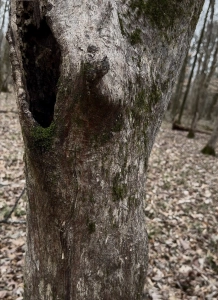
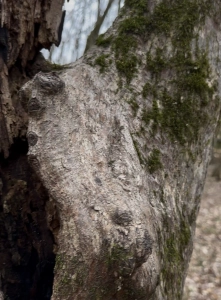
Seldom have I seen an ironwood posing in a manner attracting my camera attention.
I recorded this 56-second video of this special denizen:
Here’s a final blemish-free mug shot of our tool-worthy ironwood.
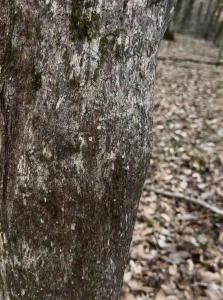
Ever since my undergraduate three-year summer employment at Savage River and Green Ridge State Forests in Maryland’s Appalachians, I have been a champion of white ash, a high-reaching quality furniture (and baseball bat) hardwood species that grows best on richly fertile cove sites, i.e. concave, lower, north to southest facing slopes. Pileated woodpeckers apparently are likewise fond of its northern Alabama counterpart (this is either white ash or green ash).
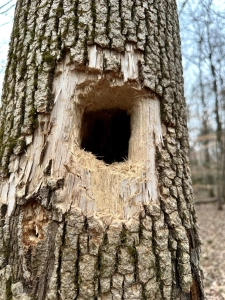
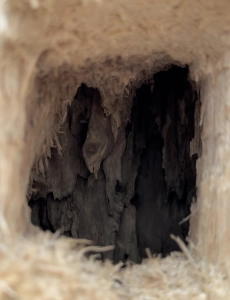
I recorded this 54-second video at the heavily peckered ash:
The eager woodpecker deposited a stash of wood chips at the tree’s base!
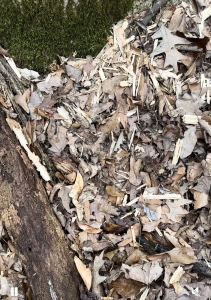
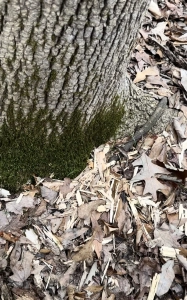
Two Eastern red cedar trees complete our species cast. The bottomland hardwood forest we explored regenerated naturally 80-90 years ago from an abandoned agricultural field. An aggressive pioneer species, red cedar served proudly in the first wave of advancing tree volunteers, its seeds kindly dispersed and strategically placed by birds. This dead cedar carcass, densely studded with spiky branch stubs, reveals that it grew for a period in full sunlight until the encroahing hardwoods overtopped it. Cedar is decay resistant. Its branches persist long after death, hence the fragrant cedar chests for protecting clothes and dry goods.
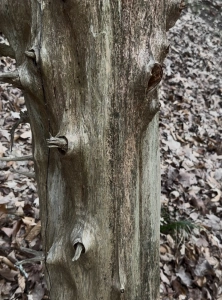
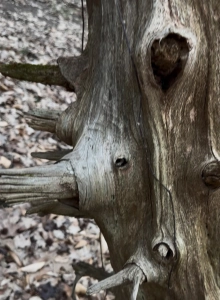
I recorded this 56-second video at the stubby-branch leaning dead cedar:
Viewing it as I might a polished wooden pendant, I lowered my camera and walked away somewhat reluctantly.
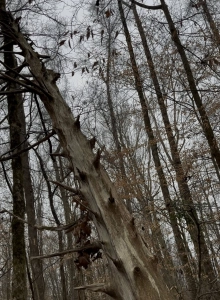
Another dead cedar stood as a woodland sculpture, as beautiful and irresistably inspiring as any human creation/
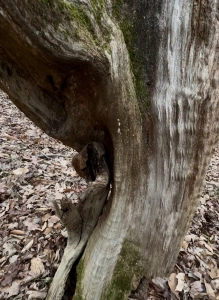
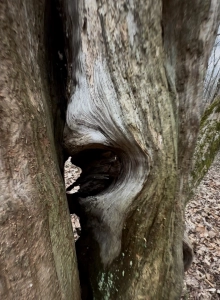
My breathless narrative serves no purpose beyond exercising my awkward typing.
I recorded this 58-second video of the final star-of-the-show:
The artwork satisfies my endless search for Nature’s beauty, awe, inspiration, magic and wonder!
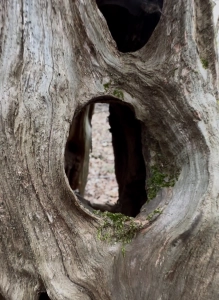
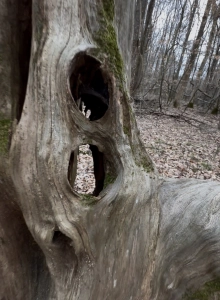
A fitting ending to my observation, reflections, photos, and brief videos from an afternoon woodland saunter!
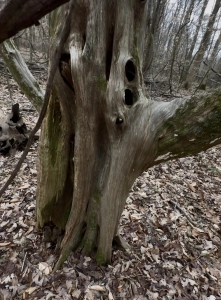
Thoughts and Reflections
I offer these observations:
- There is no result in nature without a cause; understand the cause and you will have no need of the experiment. (Leonardo da Vinci)
- In retirement I am enriched by the freedom of time without pressures, restrictions, and deadlines. (Steve Jones)
- In every walk with nature one receives far more than he seeks. (John Muir)
Inhale and absorb Nature’s elixir. May Nature Inspire, Inform, and Reward you!
Note: All blog post images created & photographed by Stephen B. Jones unless otherwise noted. Please circulate images with photo credit: “©2025 Steve Jones, Great Blue Heron LLC. All Rights Reserved.”
I am available for Nature-Inspired Speaking, Writing, and Consulting — contact me at steve.jones.0524@gmail.com
Reminder of my Personal and Professional Purpose, Passion, and Cause
If only more of us viewed our precious environment through the filters I employ. If only my mission and vision could be multiplied untold orders of magnitude:
Mission: Employ writing and speaking to educate, inspire, and enable readers and listeners to understand, appreciate, and enjoy Nature… and accept and practice Earth Stewardship.
Vision:
- People of all ages will pay greater attention to and engage more regularly with Nature… and will accept and practice informed and responsible Earth Stewardship.
- They will see their relationship to our natural world with new eyes… and will understand more clearly their Earth home.
Tagline/Motto: Steve (Great Blue Heron) encourages and seeks a better tomorrow through Nature-Inspired Living!
Steve’s Four Books
I wrote my books Nature Based Leadership (2016), Nature-Inspired Learning and Leading (2017), Weaned Seals and Snowy Summits: Stories of Passion for Place and Everyday Nature (2019; co-authored with Dr. Jennifer Wilhoit), and Dutton Land & Cattle: A Land Legacy Story (2023) to encourage all citizens to recognize and appreciate that every lesson for living, learning, serving, and leading is either written indelibly in or is powerfully inspired by Nature. All four of my books present compilations of personal experiences expressing my deep passion for Nature. All four books offer observations and reflections on my relationship with the natural world… and the broader implications for society. Order any from your local indie bookstore, or find them on IndieBound or other online sources such as Amazon and LifeRich.
I began writing books and Posts for several reasons:
- I love hiking and exploring Nature
- I see images I want to (and do) capture with my trusty iPhone camera
- I enjoy explaining those images — an educator at heart
- I don’t play golf!
- I do love writing — it’s the hobby I never needed when my career consumed me
- Judy suggested my writing is in large measure my legacy to our two kids, our five grandkids, and all the unborn generations beyond
- And finally, perhaps my books and Blogs could reach beyond family and touch a few other lives… sow some seeds for the future
